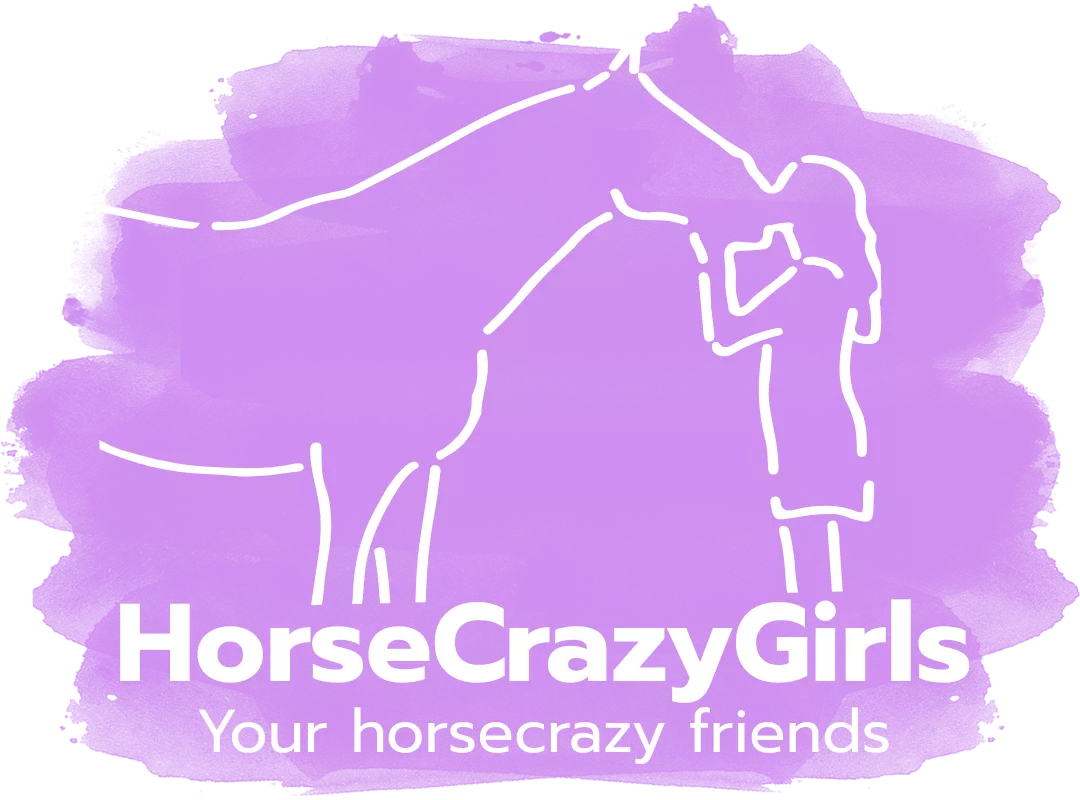Horse Breeds
What are your favorite horse breeds? If you could choose only one, what would it be? I know ... it's really hard to decide isn't it? This page is about favorite horse breeds. I'll keep adding more about different breeds, so be sure to tell me about yours!
Don't forget to check out our pony breeds page!
Featured horse breeds
Check out some of our featured horse breeds! While there are a lot more horse breeds out there, we haven't been able to write about all of them. So, until we get around to writing about all the different horse breeds out there read about some of our featured horse breeds. Our comprehensive horse breed list is at the end of the page!
American Quarter Horses
Once bred to run the quarter mile theAmerican quarter horses are a really popular full-sized horses with heavy physiques and great athletic ability, disposition and versatility.Because of their characteristics, these horses are popularly used for short distance racing. They were originally called "quarterpathers," then "colonial quarter of a mile running horses," (that's a mouthful!) And eventually "American Quarter horses."
Breed History
The Quarter horse breed was founded in the early 17th century and is a combination of English and Chickasaw horses (imported horses that were descendants of Arabia and Barb). Native Americans of Southeastern United States were the first people to domesticate this breed.
In the 19th century, Spanish conquistadors used these horses as they went West. During this time the Quarter horse was crossed with other breeds such as Mustangs and other feral horses from the Comanche, Shoshoni and Nez Perce tribes.
This new Quarter horse breed was found to have "cow sense" - a natural instinct for working with cattle. This made them popular for horse racing and for working on cattle ranches. They were used for cutting cattle, roping, brush riding, and branding calves. Cowboys used them in rodeos too. (They still do!)
Characteristics of the american quarter horse
In addition to being fast and versatile, the American Quarter horse also has some notable physical and mental characteristics.
The Quarter horse has a small, short and refined head, a strong well-muscled body, broad chest and powerful hindquarters. If you've ever ridden one of these horses, you understand what that means! They are usually 14 to 16 hands high. The color of their coats varies and range from bay, black, brown, chestnut, palomino, dun, red dun, blue dun, blue roan, cremello, white to grey.
These horses are classified into: stock, halter, racing, and hunter. Stock quarter horses are used for western pleasure shows. Halter quarter horses for halter competitions, racing are used in Quarter Horse races, and hunter types in hunter show classes.
A lot of riders also believe American Quarter horses are really smart and willing to work!
Fun facts
Today, there are more than 3 million Quarter horses registered in the American Quarter Horse Association (AQHA) worldwide.
They are popular just as they have always been. In the United States, you will find them everywhere - in race tracks, ranches, show arenas, trails and backyards.
Do you love quarter horses? Be sure to share your own pics of these gorgeous animals!
Appaloosa Horses
I think Appaloosa horses are super fascinating. No wonder they are a favorite of horsecrazy girls!Known for their colorful and leopard spot-patterned coats, they are the most popular in the US.
breed History
This breed has been around for a long time. Lots of ancient artwork show that these horses were originally domesticated in Ancient Greece, Persia, and China. They were popularly used in parades, for riding, and as coach and horsemanship horses and were especially preferred by noble and royal families.
During the 16th century, they were brought to the US by Spanish conquistadors and, from there, the breed spread from Mexico to California and Oregon.
The Nez Perce were the first people to use and become very fond of Appaloosa horses in the US. They called them “Palouse Horses,” after the Palouse River that ran through the center of the Nez Perce country.
The population of this beautiful breed declined when the Nez Perce lost many of their horses in the war of 1877. It was not until 1937 that the preservation of this breed was encouraged by Francis D. Haines.
Characteristics of the Appaloosa Horse
Aside from its patterned coat, the Appaloosa horse is known for other distinct physical characteristics – mottled skin or partly-colored skin, striped hooves and white sclera. They also have straight lean heads, wide foreheads, medium pointed ears, deep chests and long sloping shoulders. These horses are usually 14 to 16 hands high with an average weight of 950 to 1250 pounds.
Coat colors range from bay, brown, black, dun, palomino, chestnut, gray, to bay, blue and red roan.
There coat patterns include: Cape/Blanket, Snowcap, and Leopard
Fun facts
As mentioned earlier, the Appaloosa horse is the most popular breed in the US. In fact, these horses have been adopted by the state of Idaho in 1975 and are considered "official state horses."
Appaloosa horses are widely used for Western and English riding today. In fact, you've probably seen them in early Western TV shows and movies. A few famous ones include Cojo Rojo (The Appaloosa, 1966) and Zip Cochise (El Dorado, 1966). You might want to ask your parents about these movies – they’re way before our time!
But aside from Western and English riding, horses from this breed are also used for barrel racing, pole bending, fox hunting, show jumping, eventing, endurance and trail riding as well as for horse racing.
Arabian Horses
Did you know that Arabian horses get their name from the name Kohl-ani? These beautiful creatures have bluish-black skin, like kohl. People in the East used kohl as makeup before Cleopatra.breed history
This breed is one of my favorites. They are the oldest breed of horse! They were bred by people called the Bedouins who live in the Middle East.
They were bred for their endurance, ability to withstand extreme heat, and graceful gaits. These horses played an important in countless wars and were even used to help start the Thoroughbred breed.
But the breed itself didn't rise to prominence in the U.S. until about late 1800s early 1900s when large numbers of Arabian horses began being imported by wealthy Americans.
characteristics of the arabian horse
Do you know what to look for in a horse to see if it is an Arabian?
Well, it has large eyes, a neck that is arched, large nostrils, flagging tail, a light build, and a dished head. They need large nostrils because they are so energetic and need a lot of air for running. Her chest is deep so her lungs have plenty of room to expand when she is active.
Arabian horses have really strong legs and they don’t have many problems with lameness. This breed holds her tail high in the air, making her look really proud.
I like to watch Arabian horses in competition. They can do a lot of things! They can be used in halter classes, trick riding, trail riding, endurance riding, lower level eventing, and just riding for fun.
fun facts
The first one owned by someone in the United States was owned by our first president, George Washington?
The singer Jewel owns an Arabian horse named Chance. She has been riding horses for most of her life.
They have one less rib than other horses, so they have 17 instead of 18. Also, other horses have 18 vertebra in their tails, but they have only 16.
This breed comes in all different colors. They can be chestnut, bay, black or gray. Some even have what is called sabino pinto markings that look like white spots. They are pretty tall at 14.2 to 15.3hh.
Arabians are very smart and have a great attitude toward people. When they trot, they look like they are floating on air! They are very energetic, but gentle too.
Chincoteague and Assateague Ponies
Chincoteague and Assateague ponies come from an island off the coast of Virginia. According to legend, long ago a Spanish galleon got shipwrecked during a storm off the coast of Assateague Island. The ponies escaped and swam ashore.breed history
The truth isn't half as interesting. Colonists living in Virginia probably turned horses loose on the island. It doesn't matter how they got on the island, really. Today they are a wonderful American pony breed. They are well-known for flashy colors, lots of personality and intelligence.
The ponies on Assateague Island are actually divided into two different herds. The Virginia herd is in the south. These are the ponies known as Chincoteague ponies. The northern herd are called Assateague ponies. Both Chincoteague and Assateague ponies are taken care of by the National Park Service.
Every year on the last Monday in July, the Saltwater Cowboys round up all the wild ponies.
On Wednesday, the ponies swim across the channel for Pony Penning Day. Hundreds of people line the shores to watch the ponies swim. It takes them five to ten minutes to swim across. It is amazing that even the small foals can make the swim safely!
The wet ponies are then paraded to the carnival grounds. The ponies rest and those who will be in the auction the next day are tagged.
characteristics of the chincoteague ponies
At the auction on Thursday, the foals are sold to people who have come from all over the country. The money raised from the auction helps the Chincoteague Volunteer Fire Department.
While it may seem sad to sell the foals, it keeps the herd on Assateague
to around 150 ponies. This is an amount the island can support in good
health. The foals that are sold get to go to loving homes with the lucky
people who bought them.
On Friday, the older ponies are returned
to Assateague for another year. The wild ponies are checked twice a
year to see if they are healthy. They have their hooves trimmed, they
get shots to prevent contagious diseases and they get wormed.
Pony
Penning Day used to be the only place you could get a Chincoteague
pony. Now there are small herds of these rare ponies being raised in
other parts of the country. Now it's easier for those of us who are
crazy about Chincoteague ponies to get one of our own!
Chincoteague ponies can range from 12 hands to 14.2 hands high. A full grown pony can easily carry a person up to 150 pounds.
Their heads should be expressive, with a wide forehead. Their eyes should be large and soft. Their nose should be short, and can be either dished or straight. It should end in a firm, tapered muzzle.
They weigh about 750 pounds and you can find them in almost any color. Pintos are very common.
The Chincoteague ponies are smart. They do well in horse shows. They learn quickly and are fun to ride. They can be a wonderful breed to add to your stable. And even if you can't own one, you can help support them by becoming a member of the Chincoteague Pony Association.
Since Chincoteague ponies were bred by natural selection, there is quite a range of characteristics. Some ponies look more like Arabians, while others look like small Mustangs.
I love Chincoteague and Assateague ponies!! Don't you?
fun facts
The most famous Chincoteague pony was Misty. She was made famous by the book "Misty of Chincoteague" by Marguerite Henry.
The book was written in 1947, and remains a favorite of children everywhere. Like almost every other girl who read Misty's story, I've always wanted to go to Pony Penning Day to get a pony.
Misty even had a movie made about her in 1961. She toured schools around the world for awhile. Misty then retired back to Chincoteague to have babies of her own.
Misty died on October 16, 1972. If you're lucky enough to visit Chincoteague, you can see her hoof prints in the cement in downtown Chincoteague. She has a statue honoring her as Chincoteague's most famous pony, too.
Chincoteague ponies have their own registry now, like other horse breeds. It began in 1994. It is known as the Chincoteague Pony Association.
Clydesdale Horses
If you are looking for a big beautiful horse, then the Clydesdale is for you! These draft horses came from the farm horses of Clydesdale, Scotland, which is where they get their name. I was very surprised to learn they were originally one of the smaller breeds of draft horses (!) because every one that I have seen is really large.breed history
You’ve probably seen the famous Budweiser Clydesdales that are in their TV commercials and some of their ads. I got to see them up close once and they are as awesome as you’d imagine them to be! (I love their holiday commercials, by the way, where the horses go clip clopping down the road with jingle bells, don’t you?)
The horses for the Budweiser team are born at Warm Springs Ranch in Boonville MO and you can tour the ranch if you are out that way. Each horse that makes the show team must be at least 18 hands high, be geldings, have a blaze, four white stockings, a blaze, and black mane and tail.
characteristics of the clydesdale horse
You’ll usually see Clydesdales are that are bay but they can also come in black, grey, roan or chestnut. And most of them will have white markings on their face, feet or legs - even on their body every once in awhile. The Budweiser team horse all have black manes and tails.
If you think that a Clydesdales may be slow because of their size, guess again. They really do need a lot of action and exercise. And talk about a big appetite; the folks at Warm Springs Ranch say these horses can eat up to 50 pounds of hay plus 20 - 25 pounds of grain, vitamins and minerals every single day!
As you’d guess, these horses are not afraid of work and they have been used by farmers in the fields and for hauling coal and other heavy loads. Now many people keep them for pleasure riding and even shows.
If you are looking for an intelligent and gorgeous horse, and you are able to care for a horse that will need lots of hay, grain and grass to keep it well fed then you may want to learn more about this breed. One place to find out more is through the Clydesdale Horse Society which has over seven hundred members. Many of them breed this type of horse.
fun facts
The Clydesdale breed originally came from Clydesdale, Scotland. The breed is now at risk of disappearing with an estimated population of less than 10,000 in the world.
Morgan Horse
Have you ever read the novel Justin Morgan Had a Horse by Marguerite Henry? Or watched the movie? (Both are good – I recommend them!) If you have, then you might’ve already learned a little about the magnificent Morgan horse breed.
I rode a really fun Morgan horse, Rikki, for a while and really liked him so I think the breed is pretty cool. Here are some more things you might want to know about the Morgan horse breed.
Breed History
Did you know that Morgan horse is the first known
American horse breed? These horses trace back to one foundation sire –
Figure, who was owned by a horseman named Justin Morgan in 1788.
Figure
was one of two colts who were taken as payment for a debt. He looked
like just a little thing at first but he grew to be 14 hands high and
weighed 950 pounds. He turned out to be a strong bay horse that worked
the fields, had a certain distinctive look, conformation, and
temperament. These are all characteristics that Morgan horses have
today.
Figure spent a life working on farms and as a parade mount
at militia trainings. He died at the age of 32 in 1821 and was buried
in Tunbridge, Vermont. He’s the horse who is the star of the book and
movie, Justin Morgan Had a Horse. One thing I loved about his story was
that no one thought he could do what he did because of his size, but he
ended up winning all kinds of competitions!
Characteristics of the Morgan Horse
You may be able to tell a Morgan horse if you know what to look for. You’ll probably see a compact, refined build; large expressive eyes; an upright, graceful neck, strong limbs and laid back shoulders. These horses are usually black, bay and chestnut. But you may see them in other color patterns like grey, dun, palomino, roan, or even pinto patterns!
Most full grown Morgan horses will be between 14.3 to 15.2 hands high. If they are 14.2 hands or under, then they will be considered “ponies” and registered with the National Morgan Pony Registry.
Morgan horses are usually athletes. They can be ridden Western or English, and they often make great trail horses and ranch horses.
fun facts
You may see this breed in horse shows – even in the Olympics! There is even a show circuit just dedicated to this breed. You may have also seen them in show jumping, dressage, eventing or combined driving.
Famous Morgan horses include Figure, of course, as well as Little Sorrel, who Confederate General Stonewall Jackson rodeduring the Civil War and Charlemagne, mounted by General Joshua Chamberlain in the Battle of Gettysburg in 1863.
In the U.S., horses of this breed are registered with the AMHA or the American Morgan Horse Association.
Mustang Horses
Don’t you love mustang horses? They look so beautiful, running wild and free. They are one of the many equine breeds that roam the lands of North America. Originally, the mustang breed was a native of Spain. They were brought here when the Spaniards colonized America.
breed history
In the past, many mustang horses roamed freely in the wild. But
cattle-owners saw them as competition for grazing space so they were
rounded up, captured and killed. Back in those days, they were not
protected by the law so many cattle-owners did as they pleased with
them. Many were shot and brought to the slaughter house
for dog food.
During those hard times, these beautiful animals
found their champion in a woman named Velma Bronn Johnston. Growing up,
she spent most of her time with horses. Her passion and love for these
gentle giants is what led her to fight for their safety and their right
to live.
Velma Bronn Johnston is better known today as “Wild Horse Annie.” In 1950, she saw a truck dripping with blood and full of horses. She followed it and realized they were being brought to the slaughterhouse.
After seeing this, she began a campaign to save wild horses from maltreatment and death. She investigated further and enlisted the help of ranchers, politicians and businessmen, as well as schools to make her research public.
Her efforts first paid off when her campaign encouraged Nevada State Senator James Slattery to pass a bill that made mustang roundups on private property by plane and cars illegal. But Wild Horse Annie didn’t stop there. She continued her campaign to achieve better protection for the mustangs.
In 1971, her campaign finally achieved its goal. The 92nd United States Congress passed the Wild Free-Roaming Horses and Burros Act which forbade the disturbance, capture, injury and transfer of wild horses and burros even when populations are too large.
Although the 1971 act has been amended twice to address concerns of overpopulation, the mustangs and other wild horses are now free to roam and live safely – thanks to Wild Horse Annie and her animal rights campaign.
The fight to save these gorgeous horses is not over!
There are still wild horse round ups going on, and some horses have died from them. The Wild Horse Preservation Campaign is helping to save mustang horses. This is really important so be sure to visit their website and get involved!
characteristics of The Mustang
Like all other horse breeds, mustang horses come in lots of different colors such as coyote duns, blue and red roans, flea-bitten grays, shiny blacks, rusty browns, sorrel and many more. They have also been crossed with other breeds such as the East Friesian, Thoroughbreds and more.
Mustang horses are medium in size, usually about 13 to 15.2 hands high. They have short backs and smooth muscles. They have a powerful build and a good personality. Compared to other breeds of horses, they are fast and are known for their endurance.
fun facts
Did you know Mustang horses aren’t really wild? They are known as “feral horses,” which means they are domesticated but run freely in the wild. When the Spaniards left America, many of them were left in North American lands to thrive and breed in the wild.
Palomino Horses
Palomino horses, also known as golden horses with ivory manes and tails, are sone of the most beautiful. But did you know that the term “palomino” is actually a surname and only refers to a horse’s coat color, not its true breed?Yes, palomino horses are registered as a color breed and are actually a group of horses with different breeds but with almost the same colors.
breed history
Horse experts believe that they were once royal horses from Spain and were very much loved by Queen Isabella. During this time, commoners were not even allowed to own such horses!
These beautiful animals were only introduced to the United States when the Queen sent some of her beloved palominos to her Viceroy as they settled in New Spain which is now New Mexico. From there, the breed spread into Texas and throughout California.
Characteristics of the Palomino Horse
Horses that are accepted as palominos usually have a yellow, cream or gold to dark gold coat and a white or cream-colored mane and tail. They are usually born with pinkish skin that darkens with age and have amber or brown eyes. They can range anywhere from 12 to 18 hands high.
A palomino’s coat color changes its shade in the summer and in winter. During summer, a palomino’s coat is usually dark in color and naturally becomes lighter in the winter. But aside from their distinctive color characteristics, palominos are also known to be multi-purpose horses.
They are not only beautiful but are versatile, easy to handle and have great stamina. For these reasons, they are typically the first choice for parades, fiestas, shows, rodeos, ranching, trail rides, jumping and other horse-related activities.
Today, the palomino group consists of different horse breeds such as the American Saddlebred, the Quarter Horse, the Morgan Horse, the Tennessee Walking Horse, Arabians, Haflingers, Thoroughbreds, Paints and more. They can be registered with the Palomino Horse Association (PHA) or the Palomino Horse Breeders of America (PHBA).
Fun Facts
It takes two genes to get this specific coloration! Most Palominos are Quarter Horses or Quarter Horse crosses.
Shetland Ponies
Aren’t Shetland ponies the cutest? As their name implies, this breed came from the Shetland Isles which is located north of Scotland. They are known for their small yet strong build and are often used for riding, driving and packing.
Breed history
Even though Shetland ponies are originally from Scotland, they came to the United States through Eli Elliot in 1885. This breed is a cross between original ponies from Scotland and other breeds. Today, there are 2 basic types of American Shetland ponies – Classic and Modern.
characteristics of the shetland pony
The Modern category is broken in two types – Modern and Modern Pleasure. Modern ponies look a little bit like the Classic ones but are extreme in motion, while Modern Pleasure ponies display a more agreeable attitude and are generally weaker. Modern Pleasure ponies only use light pads and cannot use weighted shoes.
Classic American Shetlands are more refined than their original (Scottish) counterparts. They are known for their gentle and well-balanced disposition. A lot of people think they are perfect for shows, trail riding and parades or even as pets as they are low maintenance.
Foundation Shetlands are also grouped under the classic category. But they are more conservative and are bony.
Modern American Shetlands are crossed with the Hackney pony and are known for their attractive appearance. These ponies are agile, quick-thinkers and have a lot of natural motion.
fun facts
But despite their sturdy build, these adorable ponies are a favorite of horsecrazy girls because of their size – they are one of the smallest horses in the world! They are usually 28 to 42 inches or 7 to 10.5 hands high (although this breed isn’t measured by hands).
Thoroughbred Horses
If you’re looking for a pretty and smart horse bred for speed then thoroughbred horses are for you!
These horses are known for their agility, speed and spirit. Although they are mainly used for racing, this breed is also used for show jumping, dressage and polo, combined training and fox hunting. Thoroughbreds are also known as “hot-blooded” horses.
History
Thoroughbred horses are originally from England. During the 17th century, native mares were crossbred with imported stallions such as the Turkoman, Arabian and Barb – all from the Middle East. In 1730, thoroughbred horses were brought to North and South America, Australia, Europe and Japan – which is why this breed is now found anywhere in the world.
Breed history
The first Thoroughbred horse to arrive in the United States was Bulle Rock, imported by Samuel Gist of Virginia in 1730, followed by Diomed (1780) and Messenger (1788). Diomed is known for winning the Derby Stakes in 1780.
Other famous ones include Barbaro (2006 Kentucky Derby Champion), Ruffian (the greatest female racehorse), Seabiscuit (the Best Horse in America) and Secretariat (first US Triple Crown Champion) are famous for winning numerous races in recent years.
Prices all over the world vary and range from thousands to millions of dollars depending on factors such as age, pedigree and conformation.
characteristics of the Thoroughbred
A Thoroughbred horse is usually 15 to 17 hands high. Most of these horses are bay, chestnut, black, gray and seal brown. Some of them are roan, palomino and even white (rare).
Thoroughbreds are known to have a chiseled head, long neck, short back, deep chest, long legs and a lean body.
Horses of this breed are known for their light build, 'hot' temperament, and of course their speed.
Fun facts
In North America, 37,000 Thoroughbred foals are registered each year. Most of these foals come from the states of Florida, Kentucky and California.
Warmblood Horses
I absolutely love warmblood horses. I like the fact that they are robust in their build, good athletes, and have usually have a steady temperament.
breed history
Warmbloods originally are from Europe. It turns out that when warriors came back to Europe from the Middle East and Africa with the more hot-blooded Arabian horses that they captured in battle, they would breed their larger heavier draft 'cold-blooded' horses with the lighter, faster and fiery tempered 'hot bloods' from the Mongolian steppes.
The results was agile and quick, yet sturdy horses. Overtime with further selective breeding the modern sport horse was born.
Today there are tons of different warmbloods. The Hanoverian, Holsteiner, Westphalian, Oldenburg, and the Trakehner are just a few.
Characteristics of Warmblood Horses
The characterisitic of each warmblood is going to depend on their specific breed some are lighter horses and some are heavier. However, warmbloods generally have a robust yet refined build. They are usually smart and athletic horses, but their typically relaxed nature has caused them to gain the nickname 'dumb-bloods'.
Since they’re usually not as excitable as hot-blooded horses, they are generally popular as all-round riding horses and even for light work.
These horses are very popular competition horses in the english world. If you have ever been to an 3 day event, hunter/jumper show, or dressage competition you’ve probably seen them.
fun facts
Ever wonder why you hear so many different names for warmbloods, like Dutch or Swedish or Danish? That’s because they are named for the countries where they are bred and their studbooks are kept.
Favorite Horse Breeds
Take my poll, tell me about your favorite horse breeds, then come back to see your review and learn more!
list of Horse Breeds
Here is a comprehensive list of all the horse breeds and color breeds out there. If we are missing one please let us know!
American Paint
American Quarter Horse
Arabian
Ariegeios
Akhal Teke
Andalusian
Appaloosa
Barb
Bashkir
Belgian Draft
Breton
Camargue
Canadian Warmblood
Caspian
Cleveland Bay
Clydesdale
Criollo
Connemara pony
Dales pony
Dartmoor pony
Danish Warmblood
Dutch Warmblood
Exmoor pony
Falabella
Fell Pony
French Trotter
Friesian
Galineers Cob
Hackney pony
Haflinger
Hanoverian
Holsteiner
Hungarian Warmblood
Icelandic
Irish Draft
Konik
Knabstrup
Lippizan
Lusitano
Mangalarga
Marwari
Missouri Fox Trotter
Morgan
Miniature Pony
Mustang
National Show Horse
New Forest Pony
Newfoundland Pony
Norwegian Fjord
Oldenburg
Orlov Trotter
Palomino
Paso Fino
Percheron
Pinto
Pony of the Americas
Przewalski
Quarab
Rocky Mountain
Saddlebred
Selle Francais
Shagya
Shetland Pony
Shire
Standardbred
Swedish Warmblood
Tarpan
Tennessee Walking Horse
Thoroughbred
Trakehner
Turkoman
Welsh pony




